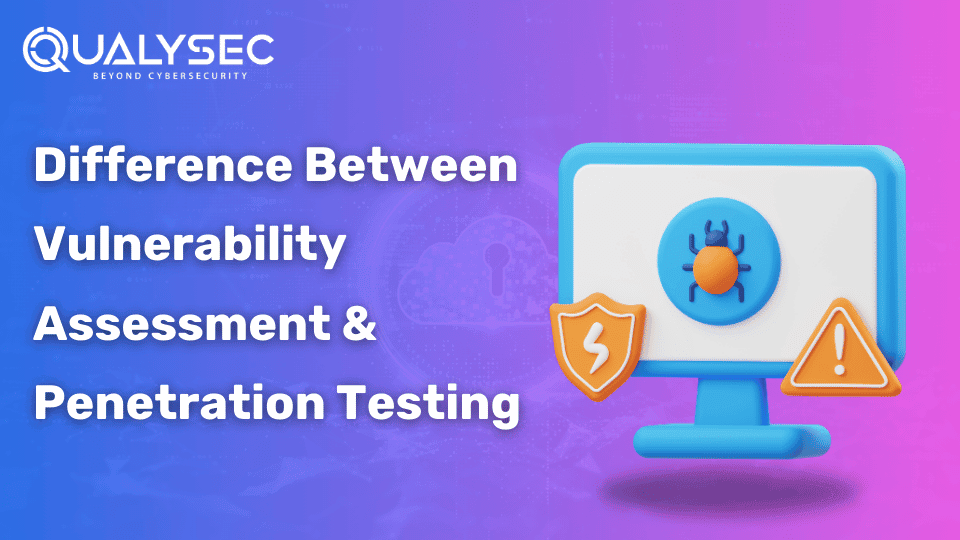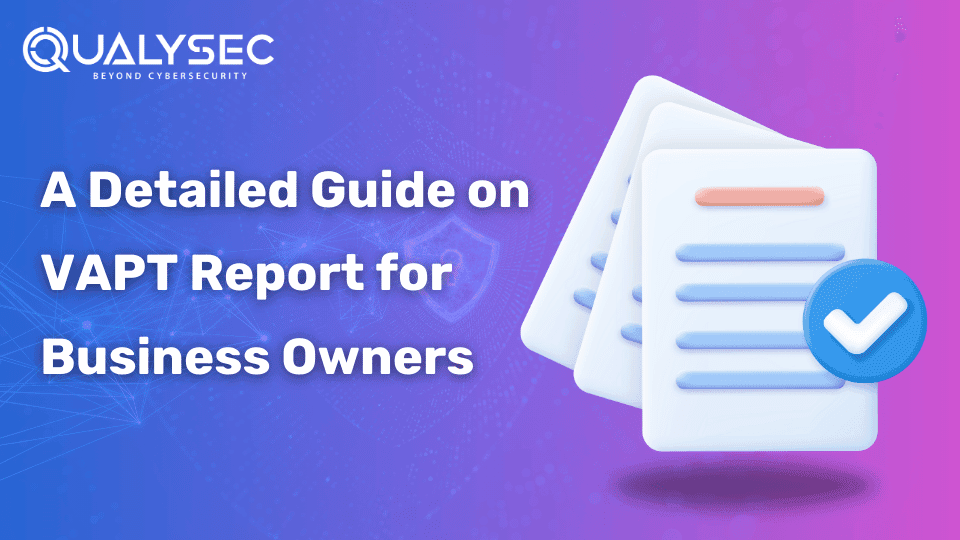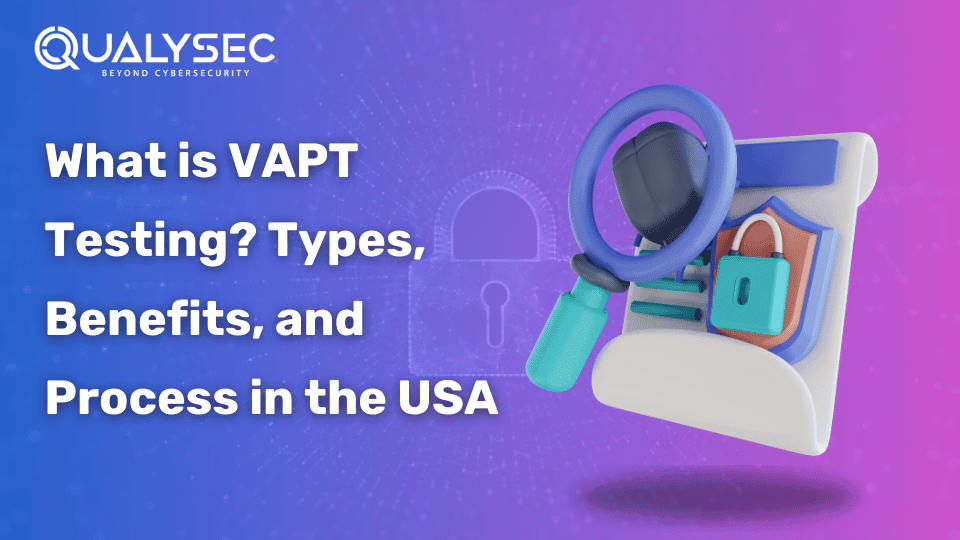Difference Between Vulnerability Assessment (VA) & Penetration Testing (PT)
Keeping the user’s data safe from cyber attackers is important. There are two ways to check for vulnerabilities. These assessments are known as vulnerability assessment and penetration testing. The difference between VA and PT (vulnerability assessment and penetration testing ) is that vulnerability assessment only identifies potential vulnerabilities. In contrast, penetration testing identifies vulnerabilities and provides insight into how these vulnerabilities might affect the network. Conducting these assessments is necessary, as these provide insight into threats and vulnerabilities. Vulnerability assessments help the company to find areas that need to be fixed or strengthened. Penetration testing shows the firm how serious those vulnerabilities are and what could happen if they are not addressed. This blog provides a comprehensive guide on the differences between vulnerability assessment and penetration testing. What is Vulnerability Assessment? Vulnerability assessment involves cybersecurity experts using automated tools to find potential vulnerabilities. Thereby providing an analysis of the current security strengths and suggesting methods to improve them. Vulnerability scanners like Burp Suite and Nmap have a fixed script, which is used to find known vulnerabilities. Despite being a quick method to find security vulnerabilities, this assessment doesn’t go deep into the application and may generate false positives. What is Penetration Testing? Penetration testing is a comprehensive testing process that involves ethical hackers, who manually try to find vulnerabilities that can be a potential threat to the application or network. Cybersecurity experts or ethical hackers use their hacking skills to test the system for each vulnerability. They also check how its security responds. if the experts successfully penetrate, then it’s a security flaw. These security issues are then documented and given to the company to rectify. Penetration testing is important for businesses, as they are prone to cyber-attacks if their security system is weak or not strong enough. With a cyberattack, the entire operation of the business can be affected. This can also affect the sensitive information stored on the business computer systems. Do you want to see a penetration testing report? Click the link below and check how the details of a pentest report can help with your business’s success! Latest Penetration Testing Report Download Vulnerability Assessment Vs Penetration Testing (VA/PT) Aspect Vulnerability Assessment (VA) Penetration Testing (PT) Purpose Identifies potential weaknesses and vulnerabilities in systems and networks Actively attempts to find and exploit vulnerabilities in the given system Approach Uses automated scanning tools to detect vulnerabilities Employs ethical hackers to simulate real-world attacks to find vulnerabilities Main Goal Find vulnerabilities for remediation Find vulnerabilities, assess their impact level, and provide remediation methods Frequency Typically done more frequently More comprehensive but resource-intensive. Done less frequently Result Provides a list of vulnerabilities to be addressed Provides a realistic assessment of the security posture and potential security issues of the given system Different Types of Penetration Testing Different Modes of Penetration Testing Mode Description Knowledge Level Blackbox The tester has no prior knowledge of the target system’s internal workings, design, or infrastructure. They approach it as an external attacker would, with no information. Zero knowledge of the system Whitebox The tester has complete knowledge and access to the target system’s source code, architecture, and internal details. They approach it from an insider’s perspective. Full knowledge and access to the system Grey box The tester has partial knowledge and access to the target system’s internal details, such as network diagrams, software versions, or specific documentation. They combine elements of both black-box and white-box testing. Partial or limited knowledge of the system VA/PT Compliance Regulations Regulation/Standard Industry/Purpose Role of VAPT PCI DSS Payment Card Industry, handling payment card data Identify and resolve vulnerabilities to comply with PCI DSS rules. Thus, ensuring secure transactions and protecting data. HIPAA Healthcare sector, protecting patient information Identify and address vulnerabilities that could affect patient information, ensuring confidentiality. GDPR Processing personal data of EU citizens Identify and mitigate security risks, and also ensure compliance with GDPR’s data protection and privacy requirements. ISO 27001 Information Security Management Systems Identify vulnerabilities and implement security controls to achieve and maintain ISO 27001 certification for information security best practices. Why should someone conduct VA/PT services? VAPT Services Description Identify Security Weaknesses VA and PT help identify vulnerabilities in systems, networks, apps, and infrastructure that could be exploited by attackers, allowing organizations to address these weaknesses proactively. Evaluate Security Defenses PT simulates real-world attacks to evaluate the effectiveness of an organization’s security defenses and how well they can withstand and respond to cyber threats. Compliance and Regulatory Requirements Many industries and regulations like PCI DSS, HIPAA, and GDPR mandate regular VA and PT as part of their security and compliance requirements. Risk Management VA and PT services help organizations understand their actual risk level and the potential impact of successful cyber attacks. It is crucial for effective risk management and prioritizing security investments. Secure New Systems and Applications When implementing new systems, apps, or infrastructure, VA and PT can identify vulnerabilities and security gaps before production deployment, ensuring a secure implementation. Stay Ahead of Emerging Threats VA and PT services help organizations stay ahead of new attack vectors and vulnerabilities, ensuring their security measures remain effective against evolving cyber threats. Improve Security Posture Regular VA and PT help organizations continuously improve their overall security posture, reducing the risk of data breaches, system compromises, and other cyber incidents. Conclusion In today’s cyber threat landscape, the question isn’t whether to do vulnerability assessments and penetration testing (VAPT). It is about which VAPT option best suits your needs. A comprehensive VAPT program with continuous scanning not only fortifies security but also fosters a security-first mindset. Also, it maintains compliance and builds customer trust. When choosing a VAPT provider, look beyond the basics. Evaluate their scanning capabilities, industry-specific experience, methodologies, and team expertise. While VAPT requires investment, the return on investment in protecting against cyber attacks and breaches makes it worthwhile. Qualysec has a good history of helping clients and giving cybersecurity services in many industries like IT. Their skills have helped clients find and fix






